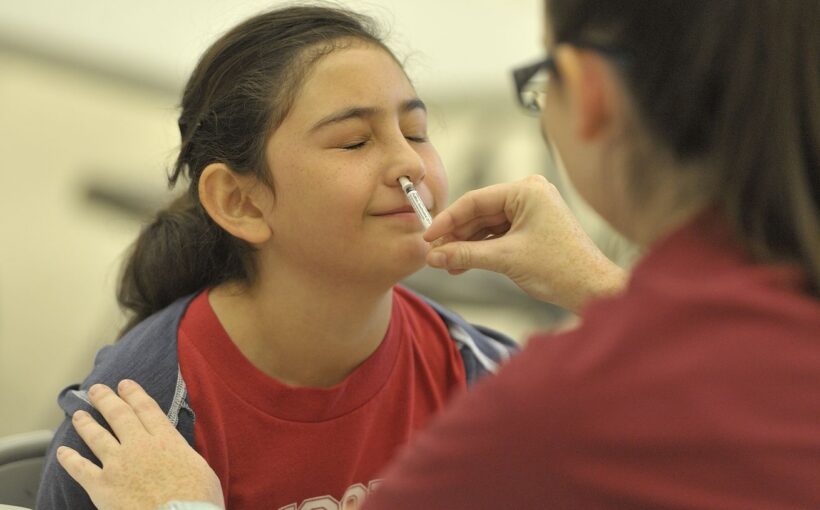
The Food and Drug Administration has approved a nasally-administered influenza immunization treatment that can be taken at home. FluMist — a nasal spray vaccine that AstraZeneca initially developed as an in-office treatment two decades ago — will still require a prescription to obtain and is expected to be made available via a new online pharmacy next year, according to The New York Times.
The treatment will require people to fill out a questionnaire on the upcoming FlueMist Home website. Once approved by a pharmacist, the nasal spray will be shipped directly to the customer’s door. The current out-of-pocket cost is around $35 to $45 per dose according to the NYT, but that may drop depending on insurance coverage.
The Centers for Disease Control and Prevention found that FluMist has a similar efficacy to the traditional shot. It has been available through healthcare providers ever since it was first approved by the FDA back in 2003. It’s suitable for people aged between 2 to 49 years old — though the FDA recommends that the nasal spray be administered by a parent/caregiver to anyone under 18. The spray could be an alternative for people who are averse to getting injections, or otherwise find it difficult or inconvenient to travel for flu immunization treatments.
“Today’s approval of the first influenza vaccine for self- or caregiver-administration provides a new option for receiving a safe and effective seasonal influenza vaccine potentially with greater convenience, flexibility and accessibility for individuals and families,” said the FDA’s vaccine center director, Dr. Peter Marks. The World Health Organization reports that there are around a billion annual cases of seasonal influenza, resulting in 290,000 to 650,000 respiratory deaths each year.



